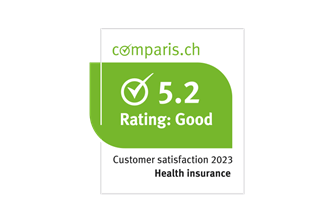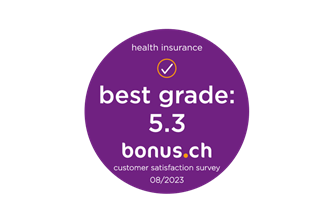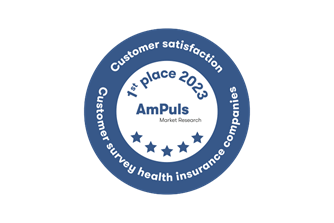
A clear perspective for the short and long view
Eight out of ten people between the ages of 15 and 74 in Switzerland need corrective lenses, according to the latest figures from OPTIKSCHWEIZ, the Swiss professional and trade association for optometry and optics. While over half of this number prefer to wear glasses to correct their vision, around a quarter opt for a mix of glasses and contact lenses.
But neither option is strictly necessary. No matter how old they are, individuals can choose corrective surgery and enjoy their lives free of glasses and contacts. Nearly three percent of the Swiss population have already chosen this option.
A little operation with big results
Refractive laser surgery covers all eye operations that can be used to correct faulty vision. The following overview explains the most popular methods, how they work, and who they are suitable for:
- LASIK/femto LASIK: After being numbed with eye drops, the eye is manually prepared for laser treatment. A small incision is made to create a flap in the cornea that is carefully lifted to the side. Using an excimer laser, the necessary amount of corneal tissue is removed in order to correct the patient's vision. Afterwards, the flap is replaced and it reattaches itself naturally. Following surgery a bandage contact lens is worn to protect the eye from environmental stresses and prevent it from drying out while it is healing.
Modern femto LASIK surgery is different from the classic version because the flap is created using a femtosecond laser instead of a tiny scalpel.
This treatment is most commonly used for severe short-sightedness (up to -10.0 dpt), severe long-sightedness (up to +5.00 dpt), an irregular curvature of the cornea (up to 5.0 dpt) and presbyopia. - TransPRK: This treatment is carried out without making any contact. After the eye is numbed, the top layer of the eye (epithelium) is removed using an excimer laser rather than a manual method. This same laser then removes a targeted area of the cornea's surface in order to correct the patient's vision. At the end of the treatment, Mitomycin C drops help to prevent scarring. A bandage contact lens is then inserted following the operation in order to protect the eye.
This procedure is used for short-sightedness of up to -8.0 dpt, long-sightedness of up to +1.0 dpt and irregular curvature of the cornea of up to 5.0 dpt. - Lens implant: As is already clear from its name, this method permanently places a contact lens in the eye – either in front of or behind the iris. It is mainly used for correcting extreme short-sightedness (up to -22 dpt) or severe long-sightedness (up to +12 dpt). If your prescription worsens over time, the implanted contact lens can be replaced by means of an outpatient procedure.
All laser surgeries take only a few seconds. You should plan on 10 to 20 minutes for your treatment. Artificial lens implant surgery lasts around 20 minutes. With all of the procedures, you will be discharged from the eye clinic on the same day.
Not suitable for everyone
Whether you're a good candidate for eye surgery depends on a variety of factors. At your first consultation you'll be informed as to whether you meet the requirements for treatment.
Patients should generally be over 20 years of age as prior to this the severity of your visual impairment can still change. Another positive factor is having a stable glasses prescription. If your prescription has changed during the last year or two, you cannot undergo laser eye treatment.
Eye surgery is not available to anyone who is pregnant or breastfeeding. Patients with eye diseases such as cataracts, glaucoma or retinal disease are also excluded.
Costs – SWICA provides support
Laser eye treatment costs between 1,500 and 2,500 francs per eye in Switzerland. All eye clinics generally offer an initial consultation free of charge.
SWICA provides generous support to its customers with its contributions towards the costs of contact lenses and glasses. SWICA contributes 90% of the cost per operation per eye up to a maximum of 500 francs under COMPLETA TOP or FORTE and up to 1500 francs under OPTIMA, with a cumulative total of 2000 francs. Additional information is available here.
06.07.2022







